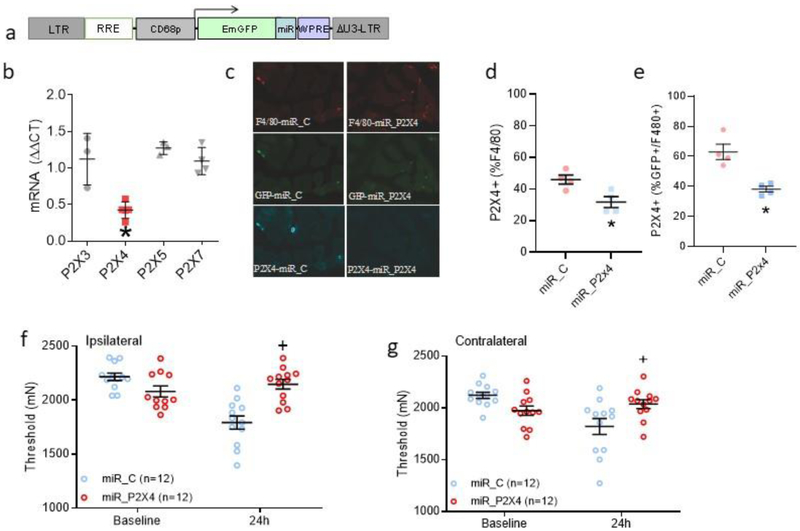Fig 3. Genetic downregulation of P2X4 on muscle macrophages selectively downregulates P2X4 mRNA and protein in macrophages and prevents activity-induced hyperalgesia.
a. Schematic representation of the lentivirus vector design. The lentivirus developed in the current study incorporated a CD68 promoter to selectively express an artificial miRNA to P2X4, miR_869, in macrophages. b. Scatter plots with means and SEM showing cultured peritoneal macrophages treated with miRNA_896 showed a decrease in P2X4 mRNA (n=5), but not of P2X3 (n=3), P2X5 (n=3), or P2X7 (n=4) mRNA. *, P<0.05 compared to control virus. c. Representative images from muscle showing F4/80+, GFP+ and P2X4+ cells from animals injection with a lentivirus expressing a control miRNA (miR_C) or an artificial miRNA expressing P2X4 (miR_P2X4). d. The percentage of immunohistochemically stained macrophages (F4/80+) that express P2X4 from mice injected with the lentivirus expressing miRNA_869 (miR_P2X4, n=4) decreased the percentage of GFP+ cells expressing P2X4 relative to GFP+ cells in muscle from mice injected with control lentivirus (miR_C, n=4) *, P<0.05 e. The percentage of GFP+ macrophages (F4/80+) that express P2X4 in muscle tissue from mice injected with the lentivirus expressing miRNA_869 (miR_P2X4) or control lentivirus (miR_C) *, P<0.05. f.g. Bar graphs showing the change in ipsilateral (f) and contralateral (g) withdrawal thresholds of the muscle before (Baseline) and 24h after induction of the model from mice treated with a lentivirus expressing miR_C or miR_P2X4. Pretreatment with the Lentivirus expressing miRNA_869 (miRNA_P2X4)(n=12: 6M, 6F) prevented activity-induced pain ipsilaterally in male (e) and bilaterally in female mice (e,f) when compared to those injected with control miRNA (miR_C) (n=12: 6M, 6F). +P<0.05 compared to miR_C. Data are mean with SEM.

